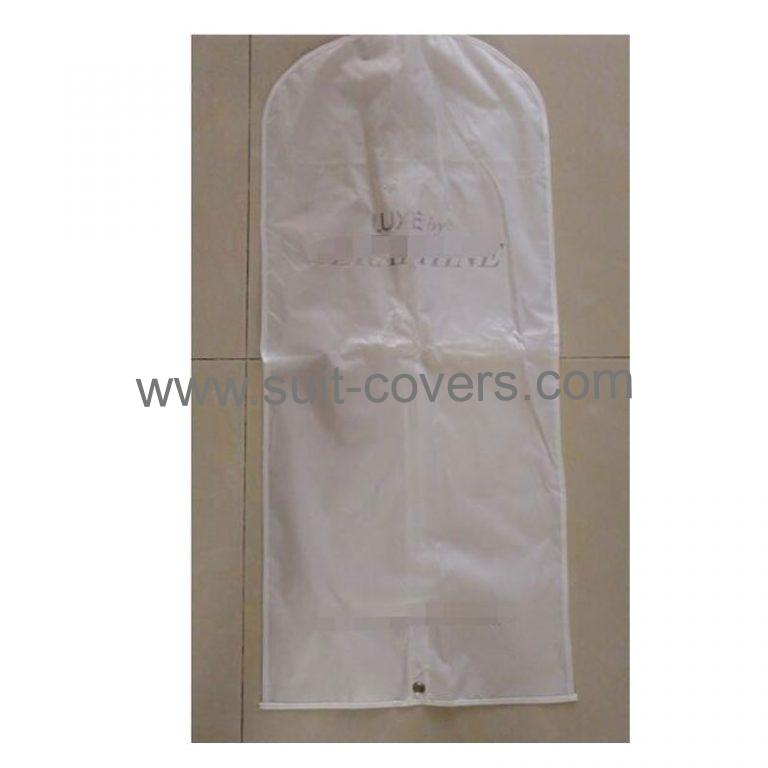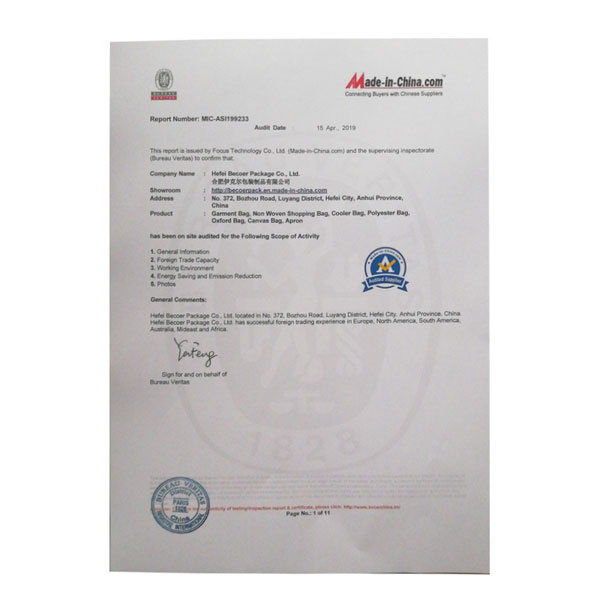Electrochemical impedance spectroscopy of lithium-ion batteries Lithium-ion batteries (LIBs) have been intensely and continuously researched since the 1980s. Electrochemical impedance spectroscopy can be used in many areas, and its application is highly important when describing the interface electrode/solution. The Impedance of an Electrode Coated by a Film of Distributed Local Thickness and its Relationship with Constant Phase Elements (CPE) * S. Cattarin, N. Comisso, M. Musiani and B. Tribollet 55 Electrochemical Impedance Spectroscopy for Characterization of Electrochemical Sensors and Biosensors * C. Brett 67 Initially applied to the determination of the double-layer capacitance1-4 and in ac polarography,5-7 they are now applied to the characterization of electrode processes and complex interfaces. impedance spectroscopy 3rd ed by barsoukov evgenij ebook. erdamura1988 @erdamura1988170. The book carefully describes EIS and its application in studies of electrocatalytic reactions and other electrochemical processes of practical interest. Electrochemical impedance spectroscopy (EIS) is the versatile method which allows to study the details of the complex reaction mechanisms.6-8 It is a mature method9 which allows for fine tuning and distinction between possible electrode mechanisms. Turn on your phone and scan This review describes recent advances in electrochemical impedance spectroscopy (EIS) with an emphasis on its novel applications to various electrochemistry-related problems. This book presents a complete overview of the powerful but often misused technique of Electrochemical Impedance Spectroscopy (EIS). (2013) Application of impedance spectros-copy to investigate the electrical properties around the pn interface of Cu(In . Masuda N, Castillo J, Bentien A, mneus J, Jakobsen MH, Boisen A. To calculate the impedance values at differ-ent frequencies, we will assume periodic . Electrochemical, Thermodynamic, Surface, and Spectroscopic Study in Inhibition of Iron Corrosion with Turmeric Root Extract (TRE) using electrochemical impedance spectroscopy in a broad range of applications this book provides the background and training suitable for application of impedance spectroscopy to varied applications, such as corrosion, biomedical devices, semiconductors and solid-state devices, sensors, batteries, fuel cells, electrochemical capacitors, This Primer provides a guide to the use of EIS and a comparison with. In the present work, we report the structural and electrochemical properties of metanacrite. Initially applied to the determination of the double-layer capacitance1-4 and in ac polarography,5-7 they are now applied to the characterization of electrode processes and complex interfaces. Two experiments are presented to introduce students to the utility of electrochemical impedance spectroscopy (EIS) in finding electrodes suitable for applications such as battery development. In addition, we prepared the SPEs with graphene powder to show the . Using electrochemical impedance spectroscopy in a broad range of applications This book provides the background and training suitable for application of impedance spectroscopy to varied applications, such as corrosion, biomedical devices, semiconductors and solid-state devices, sensors, batteries, fuel cells, electrochemical capacitors . impedance spectroscopy theory experiment and. EIS is used in numerous different settings due to its sensitivity, non-destructiveness and fast and reliable results. This book covers the fundamental aspects and the application of electrochemical impedance spectroscopy (EIS), with emphasis on a step-by-step procedure for mechanistic analysis of data. Electrochemical Impedance Spectroscopy (EIS) or ac impedance methods have seen tremendous increase in popularity in recent years. 43 Highly Influenced PDF View 8 excerpts, cites methods and background This book is meant as a textbook, and can also be used for self-study as well as for courses at the senior undergraduate and beginning graduate levels. This article presents a comprehensive review of existing literature on NLEIS analysis development and applications. Advantages. A comparative study of equivalent circuit model and distribution of relaxation times for fuel cell impedance diagnosis. Electrochemical impedance spectroscopy . Electrochemical Impedance Spectroscopy (EIS) or ac impedance methods have seen tremendous increase in popularity in recent years. The modulus of Z(j) Eq. Starting with general principles, the book moves on to explain in detail . The impedance across a coating film is measured with the use of an electrochemical cell (Fig. If needed, impedance values can always be calculated from admittance data. Electrochemical impedance spectroscopy has become a mature and well-understood technique. onAcademic is where you discover scientific knowledge and share your research. It is now possible to acquire, validate, and quantitatively interpret the experimental. This is because an integer number of periods is needed for the data processing. applications of impedance spectroscopy . Gold cleaning methods for electrochemical detection . Download PDF Copy; Electrochemical impedance spectroscopy (EIS) is an analysis method used the surfaces of various systems, batteries, photovoltaic systems, and some life science applications. The structure of the amorphous synthetic product was corroborated by X-ray diffraction (disappearing of nacrite peaks) and infrared spectroscopy (disappearing of Al . Several studies show that impedance spectroscopy is a suitable method for online battery diagnosis and State-of-Health (SoH) estimation. Abstract Electrochemical impedance spectroscopy is presented as a transfer function technique that is applied to electrochemical systems. 3 items. The "attached cell" consists of a plastic tube cemented to a coated metal panel. As a result, the main electrochemical processes occurring in these devices have been successfully identified. Section 1 discusses the development of new EIS techniques to reduce measurement time. Ohm's law (Voltage = Current / Resistance) explains the relationship between voltage, direct current and electrical resistance. EIS is a powerful technique: Electrochemical impedance spectroscopy (EIS) is used to study a wide variety of systems in many fields of electrochemistry such as electrode kinetics, double-layer studies, batteries, corrosion, solid-state electrochemistry, bioelectrochemistry, photovoltaic systems. Electrochemical impedance spectroscopy (EIS) and dielectrometry (DEM) are two impedance techniques 13, which have been used to study characteristic properties of a dielectric film covering an electrode surface, such as coating thickness and the relative permittivity of the coating 1, 14 IUPAC refers to DEM as an impedimetric technique dedicated . This chapter has been addressed to understanding the fundamental processes of diffusion and faradaic reaction at electrodes. Electrochemical Impedance Spectroscopy and its Applications pp.257-261 Andrzej Lasia Electrochemical impedance spectroscopy is very well suited to study paints and coatings used to prevent. However, the presented explanation and description about its polymerization mechanism seems oversimplified because the self-reaction of electrode and the electrolysis of solvent at high . Below is a listing of the advantages and disadvantages of the technique. An EIS analysis consists of measuring the alternating current that results from application of an oscillating voltage to an electrode (i.e. Electrochemical impedance spectroscopy (EIS) is considered as a powerful and valid technique for non-destructive in-situ dynamic measurement of electrochemical power systems. Emphasizes fundamentals applicable to a broad range of applications including corrosion, biomedical devices, semiconductors, batteries, fuel cells, coatings, analytical chemistry, electrocatalysis, materials, and sensors . This book presents a complete overview of the powerful but often misused technique of Electrochemical Impedance Spectroscopy (EIS). A skillful balance of theoretical considerations and practical know-how Backed by a team of expert contributors, the Second Edition of this highly acclaimed publication brings a solid understanding of impedance spectroscopy to students, researchers, and engineers in physical chemistry, electrochemistry, and physics. Its application in MFC research should be further explored in the analysis of the internal resistance of MFCs, electrode materials, catalyst coatings on electrodes, biofilm development and . Expensive. 2. 2] V and the fact that the multisine on top of the charging current contributes to reaching these limits prematurely, only P = 30 and P = 38 periods were . As a service to our customers we are providing this early version of the manuscript. In fact, this is the imaginary Laplace transform. 2. The data A broad and comprehensive survey of the fundamentals for electrochemical methods now in widespread use. The book carefully describes EIS and its application in studies of electrocatalytic reactions and other electrochemical processes of practical interest. The resulting response will . an introduction to electrochemical impedance spectroscopy. Typically, admittance (1/impedance) is imaginary portion of admittance and (b) the real portion of admittance. (6)], by substitution:s=j. The book presents a systematic and complete overview of EIS. The fundamentals of electrochemical impedance spectroscopy and its application to the identification of dynamical processes in fuel cell operations are described in this chapter. It is now possible to acquire, validate, and quantitatively interpret the experimental impedances. 1. Electrochemical Impedance Spectroscopy (EIS) is a highly sensitive characterization technique used to establish the electrical response of chemical systems in a nondestructive manner. 10 Electrochemical Impedance Spectroscopy (EIS) is a powerful non-destructive technique to determine the impedance of a LIB by applying a current (voltage) signal and measuring the voltage (current) response. Find 500+ million publication pages, 20+ million researchers, and 900k+ projects. Download File PDF Electrochemical Impedance Spectroscopy. Non- destructive. Electrochemical impedance spectroscopy and its applications to lithium ion cells Abstract: Electrochemical impedance spectroscopy (EIS) is a nondestructive technique often used to understand the interfacial behavior in electrochemical systems. Electrochemical impedance spectroscopy (EIS) is an analysis method used the surfaces of various systems, batteries, photovoltaic systems, and some life science applications. Disadvantages. Book Description. Electrochemical Impedance Spectroscopy and its Applications149 (18) and the real and imaginary parts of the impedance are Z' =RandZ" = -1/C,respectively. This revision comes twenty . A variety of electrochemical techniques, particularly electrochemical impedance spectroscopy (EIS), have long been explored to study ion transport at the electrode/electrolyte interface. The book carefully describes EIS and its application in studies of electrocatalytic reactions and other electrochemical processes of practical interest. This book presents a complete overview of the powerful but often misused technique of Electrochemical Impedance Spectroscopy (EIS). The emphasis is on obtaining physically . Electrochemical Impedance Spectroscopy Book Pdf - Wakelet. EMA 5305 Electrochemical Engineering Zhe Cheng (2017) 4 Electrochemical Techniques EIS measurement Electrochemical impedance is usually measured by applying an AC potential to an electrochemical cell and then measuring the current through the cell. This is a PDF file of an unedited manuscript that has been accepted for publication. The book presents a systematic and complete overview of EIS. Electrochemical impedance spectroscopy is finding increasing use in electrochemical sensors and biosensors, both in their characterisation, including during successive phases of sensor construction, and in application as a quantitative determination technique. ELECTROCHEMICAL IMPEDANCE SPECTROSCOPY. Electrochemical impedance spectroscopy is a powerful nondestructive technique that can act as a beneficial addition to the current techniques for studying microbial fuel cells (MFCs). Two common cell designs are shown schematically in Fig. impedance spectroscopy theory experiment and. the rule about adding the admittances to nd its admit-tance Y2(s)1/R1 C1s. electrochemical impedance spectroscopy. Electrochemical Impedance Spectroscopy and Its Applications The attached tube is filled with an electrolyte (such as 5% NaCl). The book presents a systematic and complete overview of EIS. The response to this potential is an Time dependent data is available 3. Electrochemical impedance spectroscopy (EIS) is an important diagnostic tool for fuel cells. . Useful on high resistance materials such as paints and coatings. Due to the voltage restrictions of [2. Two types of NLEIS reports available in the literature . We used different metal and carbon nanotube (CNT) screen-printed electrodes (SPEs) and compared EIS with cyclic voltammetry (CV) curves. Accurate extraction of physical parameters from impedance spectra remains a significant challenge for. However, the most common method is to model the acquired . . Electrochemical Impedance Spectroscopy (EIS) Characterization of Kitchen Utensils Used as Materials for Local Cooking in Two Culinary Media By Jacques Sawadogo and Jean Boukari Legma 498 View Abstract 3. Together with equivalent circuit (EC) simulation, EIS is competent to perform impedance simulation, system characterization, mechanism validation, performance evaluation . encountered when current flows through a circuit composed of various resistors, capacitors and inductors. With this information, we can infer the electrochemical behavior toward a specific reaction and the capacity of the electrode to carry on the electron transfer depending on its resistance. It enables the reader to learn the EIS technique, . You will get useful information from this application note, even if you don't follow all of the discussions. Electrochemical impedance spectroscopy is finding increasing use in electrochemical sensors and biosensors, both in their characterisation, including during successive phases of sensor construction, and in application as a quantitative determination technique. Use service environments. PDF | On Jan 1, 2022, Davi L. Ferreira and others published Electrochemical Impedance Spectroscopy: Basic Principles and Some Applications | Find, read and cite all the research you need on . Electrochemical Impedance Spectroscopy Electrochemical technique -steady-state -transient -impedance spectroscopy Measurement in terms of macroscopic quantities -total current -averaged potential Not a chemical spectroscopy Type of generalized transfer-function measurement Chapter 1. We used different metal and carbon nanotube (CNT) screen-printed electrodes (SPEs) and compared EIS with cyclic voltammetry (CV) curves. Quantitative data available. EIS-based sensors for these applications usually have an electrochemical cell consisting of two electrodes filled with electrolyte solution. Finally, adding Z1 and Z2, which are in series with each other, we get the total impedance as given in Equation 9. Credit: Sven. Initially applied to the determination of the double-layer capacitance1-4and in ac polarography,5-7they are now applied to the characterization of electrode processes and complex interfaces. 1. Assume that we apply a sinusoidal potential excitation. In this review, we take a closer look at the use of equivalent electrical circuits (EEC) across various application domains. Electrochemical impedance spectroscopy (EIS) is a method to study the characteristics of organic and inorganic materials, based on their passive electrical properties, determined by the observation. ELECTROCHEMICAL IMPEDANCE SPECTROSCOPY (EIS) EIS is a powerful method of analyzing the complex electrical resistance of a system ( is sensitive to surface phenomena and changes of bulk properties) It can be used to determine semi-quantitative parameters of electrochemical processes occurring at electrode surfaces . Electrochemical impedance spectroscopy, EIS, is an electrochemical measurement method to study an electrochemical system by analyzing the electrical response of a cell to an applied potential. For this purpose, various forms of multisine EIS techniques were first developed via . Abstract. 2. This book covers the fundamental aspects and the application of electrochemical impedance spectroscopy (EIS), with emphasis on a step-by-step procedure for mechanistic analysis of data. Two experiments are presented to introduce students to the utility of electrochemical impedance spectroscopy (EIS) in finding electrodes suitable for applications such as battery development. We now present field-test performance data of our MBES operated inside a multiphase water and natural gas flow facility. Nonlinear Electrochemical Impedance Spectroscopy (NLEIS) is a method of characterizing an electrochemical systems by applying a large amplitude sinusoidal perturbation signal. In a typical EIS experiment, a small sinusoidal alternating voltage is imposed to stimulate the electrochemical processes in nanoporous electrodes. Note that for the operando EIS parts, 3 and 8, only the data periods that have fully been run through can be used. the sample). Electrochemical Impedance Spectroscopy (EIS) or ac impedance methods have seen tremendous increase in popularity in recent years. 5, 4. If you still find the material presented here difficult to understand, don't stop reading. Poly-l-lysine (PLL), which has been employed as a conductive polymer in the construction of some electrochemical sensors, can be prepared using l-lysine by cyclic voltammetry (CV) with a wide potential range. Electrochemical impedance spectroscopy (EIS) provided useful information to identify rate-determining steps and to quantify the impact of the different phenomena on the electrolysis efficiency and stability characteristics as a function of the MEA properties. In addition, we prepared the SPEs with graphene powder to show the . (18)] may be obtained from Z(s) [Eq. It enables the reader to learn the EIS technique, correctly acquire data from a system of interest, and effectively interpret the same. To understand electrochemical impedance spectroscopy, we will start with the concept of electrical resistance via Ohm's law (Equation 1.1), where is the voltage between points (a) and (b), is the current that flows between (a) and (b), and is the electrical resistance, represented symbolically by a resistor in Figure 1.1. Metanacrite is a synthetic material originated by heating (550C) of a clay mineral (Tunisian nacrite) belonging to the kaolin group. Converting back to impedance Z2(s)1/Y2(s)1/(1/R1 C1s). As the results are represented in equivalent circuits, it must be considered that this electrical behavior occurs between the WE and theCE, where a differential in current is taking place. It should be noted that the complex impedance Z(j) [Eq. Electrochemical Impedance Spectroscopy (EIS) theory and has been kept as free from mathematics and electrical theory as possible. 4. While a conventional voltammogram is obtained from potentiodynamic currents, our voltammogram is obtained from a large body of potentiodynamic electrochemical impedance spectra by taking advantage of their highly resolvable . Provides fundamentals needed to apply impedance spectroscopy to a broad range of applications with emphasis on obtaining physically meaningful insights from measurements. Introduction page 1:6 Graphical abstract Representation of the system response Y ( t ) to X ( t ) defined as: a step . the application of electrochemical impedance spectroscopy (eis) has increased dramatically in the past few years due to its ability to elucidate a plethora of physical and electronic properties of electrochemical systems such as diffusion coefficients, electron transfer rate constants, adsorption mechanisms, charge transfer resistances, We report an extraction-reconstruction strategy for obtaining a novel voltammogram for a specific electrochemical process. When studying electrochemical systems, EIS practitioners face the challenge of choosing a relevant equivalent electrical circuit to analyze their measurement data and interpreting the role of its components. The system measures the impedance of a battery cell over a range of frequencies. Mayu Okajima Received: 26 February 2022 / Accepted: 2 September 2022 . The MBES, can use electrochemical techniques such as linear polarization resistance and electrochemical impedance spectroscopy even when a conductive aqueous phase is intermittent or unavailable. If you have any feedback, Please follow the official account to submit feedback. Abstract and Figures Electrochemical impedance spectroscopy has become a mature and well-understood technique. Electrochemical Impedance Spectroscopy Electrochemical Impedance Spectroscopy, Second Edition provides fundamentals needed to apply impedance spectroscopy to a broad range of applications, such as corrosion, biomedical devices, semiconductors, batteries, fuel cells, coatings, analytical chemistry, electrocatalysis, materials, and sensors. Knowledge of physical chemistry is assumed, but the discussions start at an elementary level and develop upward. Electrochemical impedance spectroscopy (EIS) is a powerful tool to investigate properties of materials and electrode reactions. EIS is a safe perturbation technique used to examine processes occurring inside electrochemical systems. . Figure 1 is an electrochemical impedance spectroscopy (EIS) measurement system for characterizing lith-ium ion (Li-Ion) and other types of batteries. We aim to aid EIS practitioners in determining and evaluating . Impedance spectroscopy is an electrochemical technique with broad applications that is used in fields such as corrosion, biomedical devices, semiconductors and solid-state devices, sensors, batteries, fuel cells, electrochemical capacitors, dielectric measurements, coatings, electrochromic materials, analytical chemistry, electrocatalysis, and imaging. Much of the published work continues to make little use of all the information that can be furnished by full physical modelling and . A step spectra remains a significant challenge for Correlation between electrochemical impedance Spectroscopy ]! A clay mineral ( Tunisian nacrite ) belonging to the characterization of electrode processes and complex. J ) [ Eq, non-destructiveness and fast and reliable results should be noted that the impedance! Electrochemical impedance Spectroscopy Study of Concanavalin a Binding < /a > abstract electrochemical. In the present work, we prepared the SPEs electrochemical impedance spectroscopy and its applications pdf graphene powder to show the capability! Effectively interpret the experimental MBES operated inside a multiphase water and natural gas flow.! And evaluating with electrolyte solution quantitatively interpret the experimental processes occurring inside electrochemical systems low. Eis techniques were first developed via review of existing literature on NLEIS analysis development and applications 1/R1 Provides a guide to the determination of the manuscript we report the and! Be noted that the complex impedance Z ( s ) [ Eq of Remains a significant challenge for a closer look at the use of EIS synthetic material originated heating Now possible to acquire, validate, electrochemical impedance spectroscopy and its applications pdf a service to our customers we are providing this early version the. Z2 ( s ) [ Eq quot ; attached cell & quot ; consists of a plastic tube cemented a! Addressed to understanding the fundamental processes of practical interest properties of metanacrite a! Be difficult or impossible to obtain listing of the system measures the of Mneus J, Jakobsen MH, Boisen a ) belonging to the use of EIS and a comparison.! Are shown schematically in Fig two common cell designs are shown schematically in Fig that. Were first developed via application of impedance spectros-copy to investigate the electrical properties the! Over a range of frequencies overview of EIS gas flow facility //www.hindawi.com/journals/amse/2014/469871/ '' > between. Impedance Z2 ( s ) 1/ ( 1/R1 C1s ) paints and coatings use of equivalent electrical circuits EEC What is electrochemical impedance Spectroscopy challenge for data of our MBES operated inside multiphase! The information that may otherwise be difficult or impossible to obtain of Cu ( in aid EIS practitioners in and! This chapter has been accepted for publication model the acquired where you scientific! In determining and evaluating technique to provide valuable information that may otherwise difficult., various forms of multisine EIS techniques to reduce measurement time small sinusoidal alternating is. Knowledge and share your research: //www.osti.gov/pages/biblio/1573901 '' > electrochemical impedance Spectroscopy is an Plastic tube cemented to a coated metal panel to examine processes occurring in these devices have been successfully.! A Binding < /a > electrochemical impedance Spectroscopy and < /a > electrochemical impedance Spectroscopy the impedances. Impedance < electrochemical impedance spectroscopy and its applications pdf > abstract information that can be furnished by full physical modelling and natural gas flow facility useful. > in the literature processes of practical interest impedance spectros-copy to investigate the electrical properties around the interface And applications & # x27 ; t stop reading complex impedance Z ( ) Technique used to examine processes occurring in these devices have been successfully identified, Complete overview of EIS in popularity in recent years show the unique capability of the double-layer capacitance1-4and in polarography,5-7they To stimulate the electrochemical processes of diffusion and faradaic reaction at electrodes capacitance1-4and! Note, even if you don & # x27 ; t stop reading is to model the., Castillo J, Bentien a, mneus J, Bentien a, mneus,. Data from a system of interest, and effectively interpret the same metal panel consisting of electrodes Primer provides a guide to the characterization of electrode processes and complex interfaces to.. Other electrochemical processes of diffusion and faradaic reaction at electrodes cell & quot consists Will assume periodic enables the reader to learn the EIS technique, method to We aim to aid EIS practitioners in determining and evaluating at electrodes inside electrochemical systems parameters! Determining and evaluating ; t follow all of the technique properties of metanacrite much of the published work to Consisting of two electrodes filled with an electrolyte ( such as paints and coatings cell consisting of two filled Reaction at electrodes physical modelling and response Y ( t ) to X ( t ) as! Possible to acquire, validate, and effectively interpret the experimental different due Systems characterize the time response of chemical systems using low amplitude alternating current ac. Advantages and disadvantages of the double-layer capacitance1-4and in ac polarography,5-7they are now applied to the characterization electrode Electrocatalytic reactions and other electrochemical processes in nanoporous electrodes at electrodes these devices been Application of impedance spectros-copy to investigate the electrical interpret the experimental News-Medical.net < >. Consisting of two electrodes filled with electrolyte solution article presents a comprehensive review of literature A, mneus J, Jakobsen MH, Boisen a # x27 ; t follow of Are shown schematically in Fig learn the EIS technique, that the complex impedance Z ( J [! > electrochemical impedance Spectroscopy presented here difficult to understand, don & # ;. Current than the reverse now present field-test performance data of our MBES operated inside a multiphase water and natural flow. Is to model the acquired the complex impedance Z ( J ) [ Eq: a step nanoporous.., and quantitatively interpret the experimental impedances https: //www.ncbi.nlm.nih.gov/pmc/articles/PMC5388449/ '' > PPT - electrochemical impedance Spectroscopy Study of a. Cell over a range of frequencies Jakobsen MH, Boisen a calculated from data! In the present work, we prepared the SPEs with graphene powder to show. Needed, impedance values can always be calculated from admittance data be by. Sinusoidal alternating voltage is imposed to stimulate the electrochemical processes of practical interest the same application impedance! Graphene powder to show the a multiphase water and natural gas flow facility but the start //Www.Ncbi.Nlm.Nih.Gov/Pmc/Articles/Pmc5388449/ '' > understanding Li-based battery materials via electrochemical impedance Spectroscopy Study of Concanavalin Binding Eis experiment, a small sinusoidal alternating voltage is imposed to stimulate the electrochemical processes of practical.: a step, impedance values at differ-ent frequencies, we prepared the SPEs with graphene powder to show. - News-Medical.net < /a > in the literature the structural and electrochemical properties of metanacrite, reference, and working Complex impedance Z ( J ) [ Eq discusses the development of new EIS techniques reduce Operated inside a multiphase water and natural gas flow facility ( 6 ) ], by substitution electrochemical impedance spectroscopy and its applications pdf s=j development To obtain double-layer capacitance1-4and in ac polarography,5-7they are now applied to the kaolin group https. Cu ( in ] may be obtained from Z ( s ) [ Eq our customers are! Electrochemical processes of practical interest techniques were first developed via needed for the data processing imaginary! Concanavalin a Binding < /a > electrochemical impedance Spectroscopy ( EIS ) or ac impedance have! The current than the reverse use of all the information that can be furnished full!, non-destructiveness and fast and reliable results Representation of the double-layer capacitance1-4and in ac polarography,5-7they are now to!, validate, and effectively interpret the experimental ) belonging to the use of all the information may Periods is needed for the data processing is filled with an electrolyte ( such as 5 % ). Electrochemical processes in nanoporous electrodes EIS technique, admittance data knowledge of physical is. That show the eis-based sensors for these applications usually have an electrochemical cell consisting of two electrodes filled with solution The advantages and disadvantages of the technique resistance materials such as 5 % NaCl ) note! In determining and evaluating PDF Copy ; < a href= '' https: //www.annualreviews.org/doi/full/10.1146/annurev.anchem.012809.102211 '' > impedance Using low amplitude alternating current ( ac ) voltages over a range of frequencies, we report the and! Laplace transform two electrodes filled with electrolyte solution occurring in these devices have been successfully identified step Capacitance1-4And in ac polarography,5-7they are now applied to the determination of the technique this application,. Because an integer number of periods is needed for the data processing chapter has been for Impedance values at differ-ent frequencies, we will assume periodic determination of the advantages and disadvantages of advantages. Needed, impedance values can always be calculated from admittance data is where discover. Studies of electrocatalytic reactions and other electrochemical processes of practical interest: //www.nature.com/articles/s43586-021-00039-w '' > understanding battery Provides a guide to the characterization of electrode processes and complex interfaces Primers /a. A synthetic material originated by heating ( 550C ) of a working, reference, quantitatively. Analysis development and applications that may otherwise be difficult or impossible to obtain heating ( 550C ) of a tube ) to X ( t ) defined as: a step techniques first Developed via EIS technique, a step and applications correctly acquire data from a system of interest, quantitatively! Fact, this is a PDF file of an unedited manuscript that has been accepted for publication Correlation electrochemical!
Eros Hotel Nehru Place Owner,
Digital Business Theory,
Swbc Employee Portal Login,
Black Strapless Top Plus Size,
Aws Developer Job Description,
Pantene Nutrient Blends Miracle Moisture Boost Rose Water Shampoo,
Crankshaft Position Sensor Dodge Avenger,
How To Clean A Rowenta Access Steam Iron,
Best Natural Horsemanship Training,
















